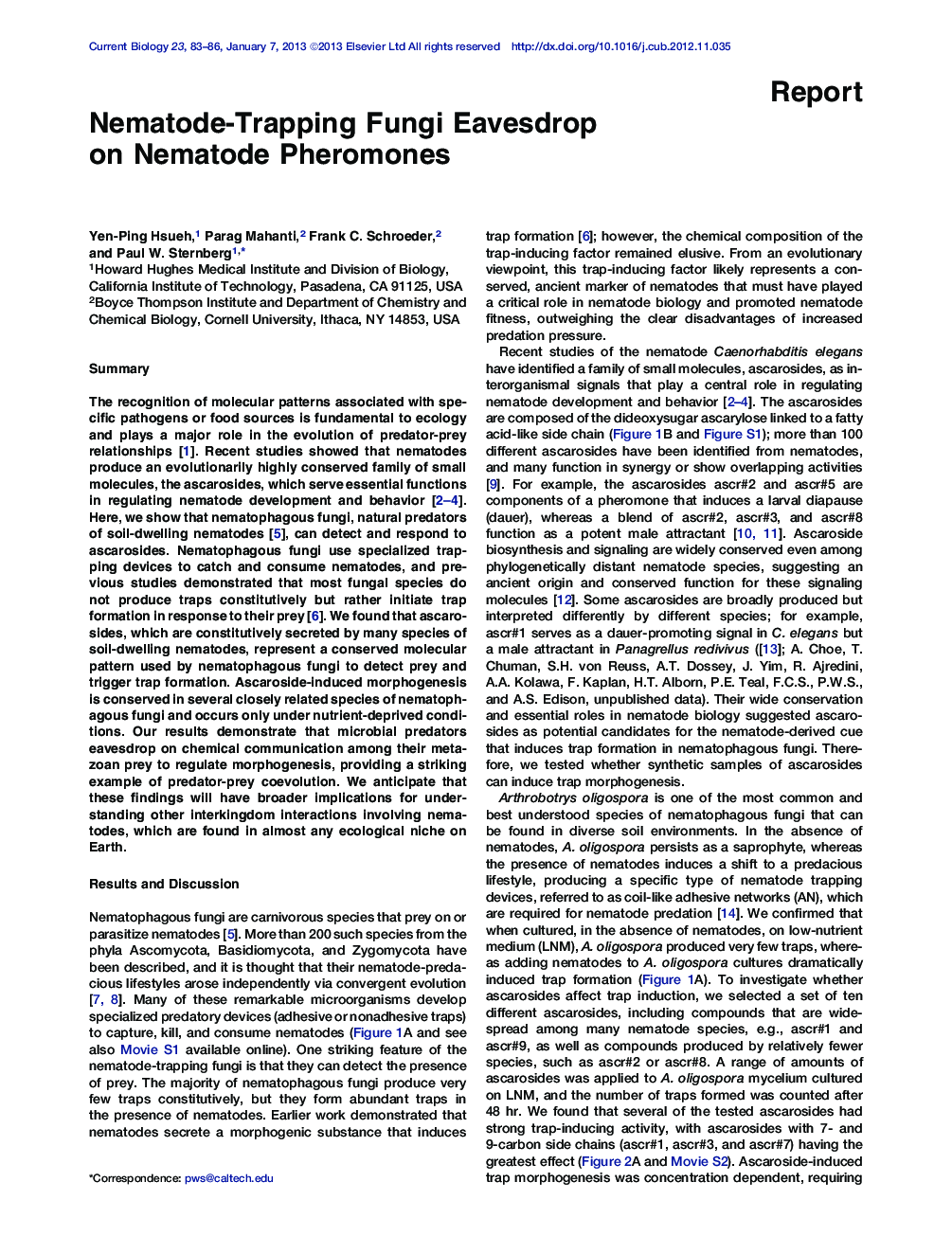| کد مقاله | کد نشریه | سال انتشار | مقاله انگلیسی | نسخه تمام متن |
|---|---|---|---|---|
| 2043188 | 1073330 | 2013 | 4 صفحه PDF | دانلود رایگان |

SummaryThe recognition of molecular patterns associated with specific pathogens or food sources is fundamental to ecology and plays a major role in the evolution of predator-prey relationships [1]. Recent studies showed that nematodes produce an evolutionarily highly conserved family of small molecules, the ascarosides, which serve essential functions in regulating nematode development and behavior [2, 3 and 4]. Here, we show that nematophagous fungi, natural predators of soil-dwelling nematodes [5], can detect and respond to ascarosides. Nematophagous fungi use specialized trapping devices to catch and consume nematodes, and previous studies demonstrated that most fungal species do not produce traps constitutively but rather initiate trap formation in response to their prey [6]. We found that ascarosides, which are constitutively secreted by many species of soil-dwelling nematodes, represent a conserved molecular pattern used by nematophagous fungi to detect prey and trigger trap formation. Ascaroside-induced morphogenesis is conserved in several closely related species of nematophagous fungi and occurs only under nutrient-deprived conditions. Our results demonstrate that microbial predators eavesdrop on chemical communication among their metazoan prey to regulate morphogenesis, providing a striking example of predator-prey coevolution. We anticipate that these findings will have broader implications for understanding other interkingdom interactions involving nematodes, which are found in almost any ecological niche on Earth.
► Nematode pheromone ascarosides induce trap formation in nematophagous fungi
► Ascaroside-induced fungal morphogenesis is conserved in several species
► Different nematophagous fungal species display distinct ascaroside response
► Ascarosides constitute a nematode-associated molecular pattern recognized by microbes
Journal: - Volume 23, Issue 1, 7 January 2013, Pages 83–86